To be developed
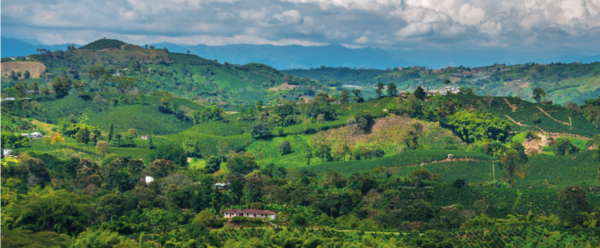
The purpose of this project is to make a collection of the genomic resources of the plant species of the coffee-growing region of Colombia. Among the groups of plants to be studied are those of great agricultural importance (coffee, corn, avocado), of medium agricultural importance (fruit trees, vegetables), important for the pharmaceutical and cosmetic industries and also those emblematic plants of the country that have mainly ecological importance (wax palm, frailejon, yarumo)
General objective
To generate genomic tools for the plant species that constitute the agroforestry systems of the coffee-growing region in order to predict and diagnose their response to climate change, improve food security and support family agriculture.
Specific objectives
- Identify genes related to the production of promising compounds for the pharmaceutical and cosmetic industries.
- To identify genes related to the productivity of agriculturally important plants in Colombia
- To identify stress biomarkers in plants of agricultural and ecological importance
The aim is to use modern 'omics' technologies to study these plants. These technologies include genomicsequencing, molecular marker technologies (SNP's, Genotype by Sequencing, Target Sequence Hybridization), RNAseq and metabolomics, among others.
Colombian Genome
Stages of the project
- Sensitization of the project in the target group of the study.
- Sample collection.
- Sequencing.
- Analysis of genetic variants.
- Socialization of the results.
Impact
- To have a centralized genetic bank of the Colombian population.
- Possibility of knowing where Colombians come from.
- To know the incidence of diseases.
- Provide tools for product development.
- Support the development of personalized medicine in Colombia.
Under development
Genomic sequencing and evolutionary studies of the wax palm and allied species.
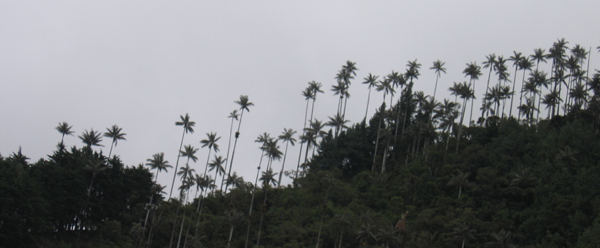
Reaching a height of fifty-two meters, the wax palm (Ceroxylon quindiuense) is the tallest palm in the world, recognized as an emblematic symbol of Colombia. It is a key species in the provision of ecosystemservices in the cloud forests of the Andes or high Andean tropical forest, providing positive effects on various components of biodiversity, such as food and shelter for birds, mammals and insects, making it a model organism for the study of ecological and evolutionary processes in these ecosystems.
General objective
- To study evolutionarily and geologically the genus Ceroxylon using capture hybridization and phylogenomics.
Specific objectives
- Obtain the first draft of the wax palm genome by Next Gen Sequencing (NGS).
- Identify genes involved in various aspects of palm adaptation to the Andean cloud forest ecosystem such as those involved in glucose metabolic pathways and oil synthesis and transcription factors involved in pollination and fruit and seed dispersal
- Discovering genes related to palm adaptation to high altitudes and low temperatures common in the habitats where the plant lives through comparative genomics.
However, it is on the IUCN red list as endangered in Colombia. Decades of massive deforestation, selective logging and indiscriminate economic uses have severely reduced its population sizes. Advancesin the study of genomics have increased our knowledge of plant conservation
Bioprospecting for the cosmetic industry.
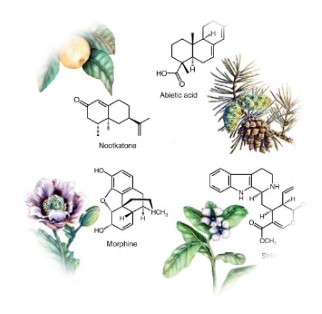
Expected results
The incorporation of new products of natural origin in companies of the cosmetic sector opens new market niches for them at national and international level, due to the incorporation of new technologies forthe development of innovative products.
General objective
- To generate technological and scientific capacities in bioprospecting, establishing a model of in vitro and in silico analysis of metabolism in plants of traditional use, to establish the production potential of metabolites of interest and their transfer to the cosmetic industry. in vitro e in silico del metabolismo en plantas de uso tradicional, para establecer el potencial de producción de metabolitos de interés y su transferencia a la industria cosmética.
Specific objectives
- To work jointly between the scientific sector and the cosmetic industry to identify the economic potential ofmetabolites of plants of traditional use in Colombia, as a contribution to the strengthening of production processes.
- To physico-chemically characterize metabolites related to potential uses, which represent an economic interest for companies in the cosmetic industry.
- To genetically and metabolically characterize plants of traditional use, of interest to the cosmetic industry, that have market potential.
- Consolidate a model that compiles the in vitro and in silico characterization of metabolites to guide the development of commercial product prototypes.
Developed
Seaflower Scientific Expedition 2016

Exploration and determination of the potential for exploitation of the microbial biodiversity of marine ecosystems in the Seaflower Biosphere Reserve using metagenomics. Through a metagenomic analysis, the diversity and metabolic functionality of microbial communities associated with macroorganisms representative of the Seaflower Biosphere Reserve, a Marine Protected Area of 65,018 km2, will be determined.
Phylogeny of Orchids

The pangenome, understood as the complete set of genes of a species, has emerged as a novel approach to study the genetic versatility of species and even genera. This project consisted of generating the pangenome of the Coffea genus to identify genes associated with the morphology and quality of the bean in the different coffee species. These results provide candidate genes to be introduced in the cultivable species of coffee with the purpose of improving this crop of national and world importance. Coffea para identificar genes asociados a la morfología y la calidad del grano en las diferentes especies de café. Estos resultados aportan genes candidatos para ser introducidos en las especies cultivables de café con fines de mejoramiento de este cultivo de importancia nacional y mundial.
Pangenome of Coffea species
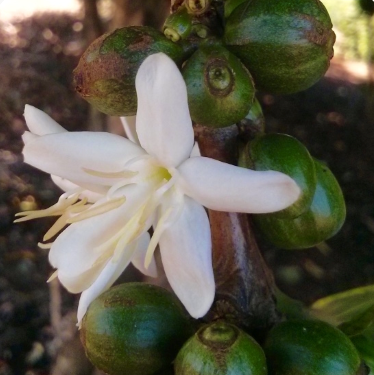
The pangenome, understood as the complete set of genes of a species, has emerged as a novel approach to study the genetic versatility of species and even genera. This project consisted of generating the pangenome of the Coffea genus to identify genes associated with the morphology and quality of the bean in the different coffee species. These results provide candidate genes to be introduced in the cultivable species of coffee with the purpose of improving this crop of national and world importance. Coffea para identificar genes asociados a la morfología y la calidad del grano en las diferentes especies de café. Estos resultados aportan genes candidatos para ser introducidos en las especies cultivables de café con fines de mejoramiento de este cultivo de importancia nacional y mundial.
Annotation of the octocoral Antillogorgia bipinnata genome

This project was based on generating the first draft genome of the octocoral Antillogorgia bipinnata, a coral species of the Caribbean Sea. This species, like all coral reefs, is subject to the effects of climate change that threaten its populations. As a result, this study contributes genomic knowledge as a basis for ecological studies of coral and other corals aimed at their conservation. This project was developed in collaboration with the BIONMAR group of the Universidad de los Andes Antillogorgia bipinnata, una especie de coral del mar Caribe. Esta especie, al igual que todo el arrecife de coral, está sujeta a los efectos del cambio climático que amenazan sus poblaciones. Como resultado, este estudio contribuye conocimiento genómico de base para estudios ecológicos del coral y otros corales que apunten a su conservación. Este proyecto se desarrolló en colaboración con el grupo BIONMAR de la Universidad de los Andes.
Deciphering the tumor microenvironment in a HT29 cancer line through proteomics and metabolomics
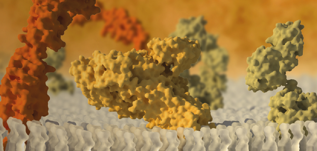
This project consisted of studying tumor dynamics in HT29 cancer cells under different stress conditions in order to determine changes at the level of protein expression and metabolite concentrations that indicate an affectation in the tumor microenvironment with respect to normal conditions. As a result, this project allowed understanding the tumor dynamics at the different molecular levels analyzed in order to provide knowledge for possible cancer treatments. The study was developed in collaboration with teaching researchers from the Universidad del Rosario
Microbial populations associated with Moko disease suppressive soils
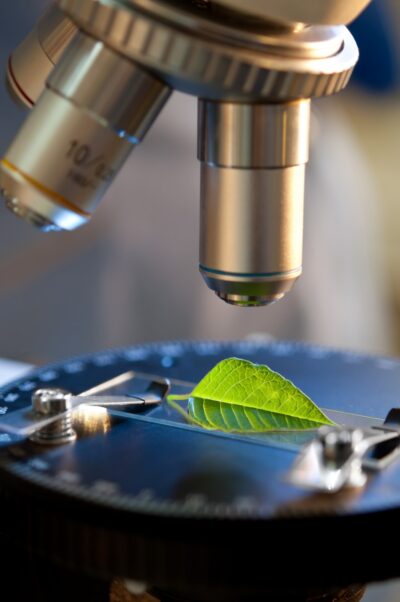
Moko disease, caused by the bacterium Ralstonia solanacearum, is one of the most destructive diseases threatening banana and plantain crops. This project was based on the analysis of microbial communities of soils with putative suppressive activity of Moko disease in order to determine the potential of soil microorganisms to contribute to the suppressive effect. These results can contribute to the management and biological control of the disease in these crops. This work was carried out in collaboration with the International Center for Tropical Agriculture (CIAT Ralstonia solanacearum, es una de las enfermedades más destructivas que amenazan los cultivos de banano y plátano. Este proyecto se basó en el análisis de las comunidades microbianas de suelos con supuesta actividad supresora de la enfermedad de Moko con el fin de determinar el potencial de los microorganismos del suelo para contribuir al efecto supresor. Estos resultados pueden aportar al manejo y control biológico de la enfermedad en estos cultivos. Se realizó en colaboración con el Centro Internacional de Agricultura Tropical (CIAT).
Search for soils suppressive to Panama disease caused by the fungus Fusarium oxysporum f. cubense

Panama disease refers to the wilting of bananas caused by the fungus Fusarium oxysporum f. sp. cubense. Chemical control of the fungus has had little efficiency, which has led to the need to ensure its control by cultural practices. In this context, this project was based on the analysis of the microbial communities of banana and plantain soils in order to identify biological factors associated with a potential suppressive activity of the disease. These results can contribute to the management and biological control of the disease in these crops. This work was carried out in collaboration with the International Center for Tropical Agriculture (CIAT Fusarium oxysporum f. sp. cubense. El control químico del hongo ha tenido poca eficiencia, lo cual ha llevado a la necesidad de garantizar su control por prácticas culturales. En este contexto, este proyecto se basó en el análisis de las comunidades microbianas de suelos para cultivo de banano y plátano con el fin de identificar factores biológicos asociados a una potencial actividad supresora de la enfermedad. Estos resultados pueden aportar al manejo y control biológico de la enfermedad en estos cultivos. Se realizó en colaboración con el Centro Internacional de Agricultura Tropical (CIAT).
Genome sequencing of the bacterium Ralstonia solanacearum race 2 causing Moko disease in plantain. Ralstonia solanacearum raza 2 causante de la enfermedad de Moko en plátano
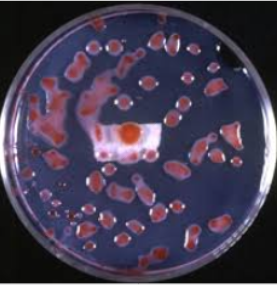
This project consisted in generating the first genome of the bacterium Ralstonia solanacearum race 2, causing Moko disease in plantain. The genomic information derived from this project served as a reference to design molecular "barcodes" for the rapid and accurate identification of this bacterium. The results obtained contribute to the identification of the bacterium in soils for the management and biologicalcontrol of the disease. This work was carried out in collaboration with the International Center for Tropical Agriculture (ICA) Ralstonia solanacearum raza 2, causando de la enfermedad de Moko en plátano. La información genómica derivada de este proyecto sirvió de referencia para diseñar “código de barra” moleculares para la identificación rápida y precisa de esta bacteria. Los resultados obtenidos aportan a la identificación de la bacteria en suelos para el manejo y control biológico de la enfermedad. Este trabajo se realizó en colaboración con el Centro Internacional de Agricultura Tropical (CIA
"Develop a traceability methodology for biofertilizers and biocontrollers used in coffee cultivation."

Develop a traceability methodology for biofertilizers and biocontrollers used in coffee cultivation. Seeking to obtain the existing gene models in the two coffee genomes studied. Collaboration, Universidad CatólicaBioprotección-Cenicafé BIOS
Computational model of the compatible interaction between Solanum tuberosum and Phytophthora infestans.

Develop a traceability methodology for biofertilizers and biocontrollers used in coffee cultivation. Seeking to obtain the existing gene models in the two coffee genomes studied. Collaboration, Universidad CatólicaBioprotección-Cenicafé BIOS
Gene expression of acropora tenuis coral through three developmental stages.

The interaction that occurs between a plant and a pathogen during an infection process is indicative of theplant's defense response to that stress. The study of this interaction allows us to understand the plant's resistance mechanisms to support the design of disease control strategies. In this context, this project was based on the generation of a genome-scale metabolic model of the compatible interaction between potato (Solanum tuberosum) and the phytopathogen Phytophthora infestans, in order to make the first genome-scale metabolic reconstruction of potato and the first metabolic model of a plant-pathogen interaction. This project was developed in collaboration with the National University of Colombia and the University of the Andes.Solanum tuberosum) y el fitopatógeno Phytophthora infestans, con el fin de hacer la primera reconstrucción metabólica a escala genómica de la papa y el primer modelo metabólico de una interacción planta-patógeno. Este proyecto se desarrolló en colaboración con la Universidad Nacional de Colombia y la Universidad de los Andes.
Evaluation of the sh3 resistance factor region in the coffee (coffea arabica) genome.
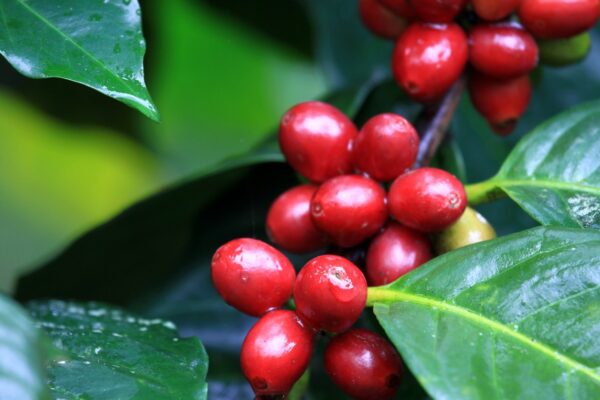
The interaction that occurs between a plant and a pathogen during an infection process is indicative of theplant's defense response to that stress. The study of this interaction allows us to understand the plant's resistance mechanisms to support the design of disease control strategies. In this context, this project was based on the generation of a genome-scale metabolic model of the compatible interaction between potato (Solanum tuberosum) and the phytopathogen Phytophthora infestans, in order to make the first genome-scale metabolic reconstruction of potato and the first metabolic model of a plant-pathogen interaction. This project was developed in collaboration with the National University of Colombia and the University of the Andes.Solanum tuberosum) y el fitopatógeno Phytophthora infestans, con el fin de hacer la primera reconstrucción metabólica a escala genómica de la papa y el primer modelo metabólico de una interacción planta-patógeno. Este proyecto se desarrolló en colaboración con la Universidad Nacional de Colombia y la Universidad de los Andes.
Annotation of the Saccharum spontaneum sugarcane genome.

This project was based on the analysis of the Saccharum spontaneum sugarcane genome, obtained by the international sugarcane consortium SUGESI, to identify and describe the repetitive elements. In plants, genomes are highly repetitive and these regions provide genetic diversity and are important for structural and functional organization. This work was carried out in collaboration with the University of Illinois and the Institut de recherche pour le développement (IRD). Saccharum spontaneum, obtenido por el consorcio internacional de la caña de azúcar SUGESI, para identificar y describir los elementos repetitivos. En las plantas, los genomas son altamente repetitivos y estas regiones aportan diversidad genética y son importantes para la organización estructural y funcional. Este trabajo se realizó en colaboración con la Universidad de Illinois y el Institut de recherche pour le développement (IRD).
Bacterial biofilms of the orotracheal tube and their antimicrobial sensitivity in the medical ICU in Bogota, Colombia.

This project addresses the problem of healthcare-associated infections (HAIs) that are linked to hospitalization mainly in Intensive Care Units (ICUs) and are an important cause of morbidity and mortality in hospitalized patients. The objective of this study is to characterize the microbial communities of biofilms formed on orotracheal tubes of patients requiring mechanical ventilation admitted to the Medical ICU of the Fundación Cardioinfantil. This study is one of the pioneers in the area of biofilms on invasive medical devices routinely used at hospital level in Colombia. As a result, it allowed understanding aspects inherent to antimicrobial resistance with a view to possible future treatments and to contribute knowledge base for standards that allow better care and treatment of ICU patients.
TecDigital 2021
MinTIC created TecDigital, the first Shared Services Center for Advanced and Emerging Technologies forDigital Transformation in the country, which allowed 1,157 companies to know their level of technological maturity and trace a route of advanced digital transformation to sophisticate their services and products using these technologies. TecDigital also offered advice with experts to identify the technologies that really benefit their business, in addition to receiving support for the formulation of projects to solve business difficulties and the search for co-financing to implement them. Finally, 7 technological appropriation projects focused on increasing the value of business models were implemented.
Analítica 2021
AnalíTIC4 is the first Colombian Supercomputing Network created between MinTic and BIOS to support companies and the Government sector in strengthening their mission and operational processes, through solutions based on data analysis and processing, allowing them to increase their competitiveness and sophisticate their products and services. Its main objective is to increase the use of data, so that they are managed as assets that can generate social and economic value and contribute to the digital transformation of organizations in the face of the fourth industrial revolution.